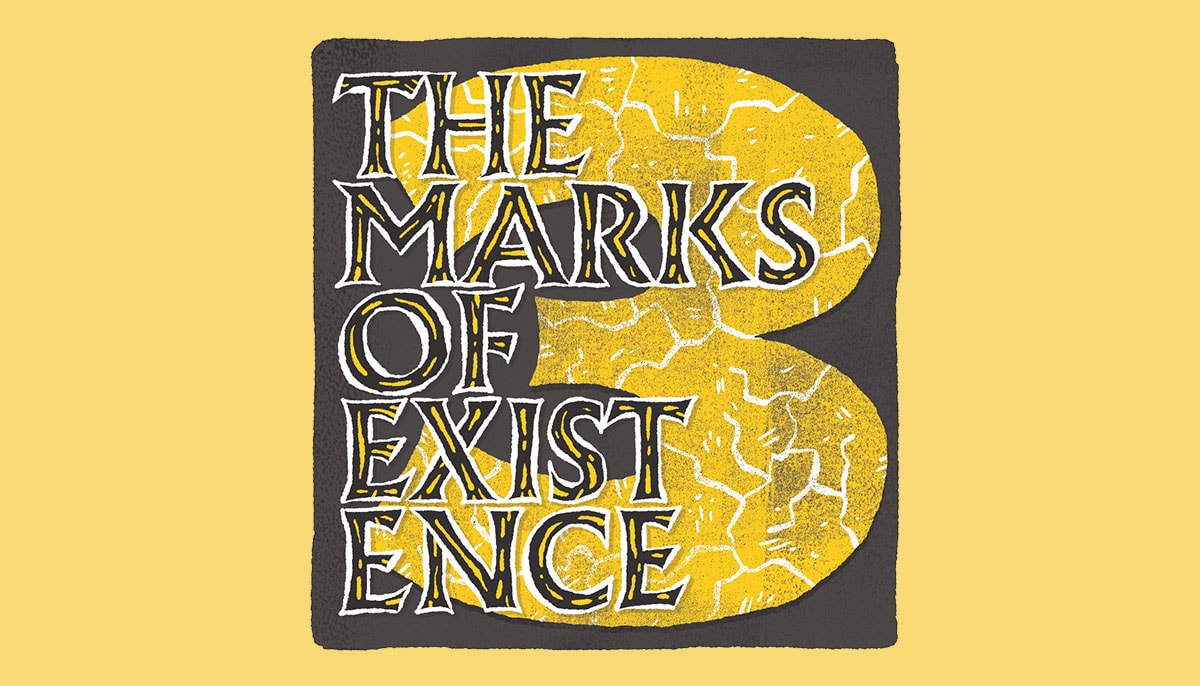The three marks of existence describe the true nature of ourselves and everything we experience. According to Buddhism, understanding that all phenomena have these three characteristics is a vital step on the path to liberation from suffering. The three marks of existence are:
1. Impermanence (Pali: annica)
The Buddha taught that all things disintegrate and so are impermanent. That is because all compounded phenomena are made of parts and inevitably fall apart. Another way to put it is that everything dies. Our denial of this reality is a fundamental cause of suffering.
2. Suffering, or dissatisfaction (dukkha)
Every experience is marked by a quality of suffering or dissatisfaction, from extreme pain to a background sense of unease. Our struggle to maintain a sense of solid self marks our lives with stress and fear, and will always be unsuccessful because of truths of impermanence and non-self.
3. No Self (annata)
Neither we nor anything else in reality has a solid, separate, and independent self. Everything is merely the product of infinite causes and conditions. While the truth of impermanence describes how things are, no self describes what they are not. Or, as Thich Nhat Hanh puts it, impermanence is emptiness in time; no self is emptiness in space.
These three marks of existence are interconnected and deeply woven into the teachings and practices of Buddhism. Recognizing these characteristics helps practitioners gain insight into the true nature of reality and develop a more skillful and compassionate approach to life. It should be noted that in addition to these three, some Buddhist teachers add a fourth: nirvana, or nibbana in Pali. This describes the absolute state of ultimate peace that is free of all dualism and struggle. It marks all things because relative phenomena are not separate from the complete peace of nirvana.
Buddhism A–Z
Explore essential Buddhist terms, concepts, and traditions.

